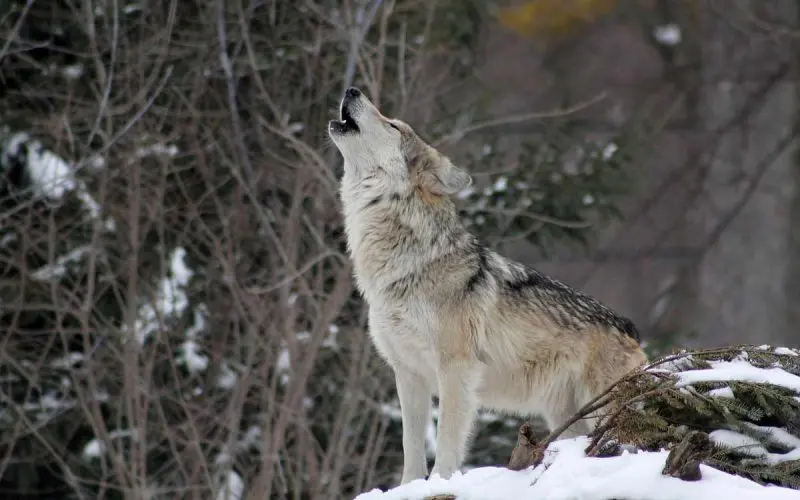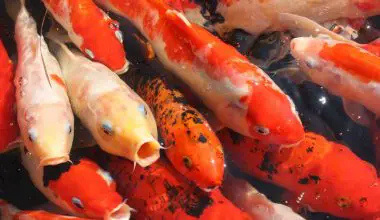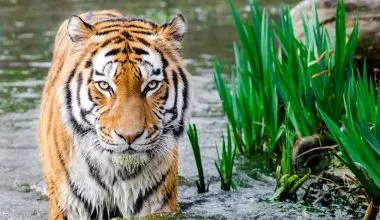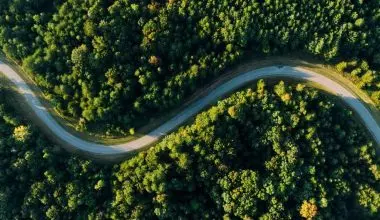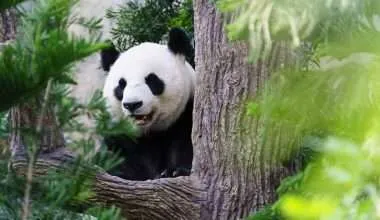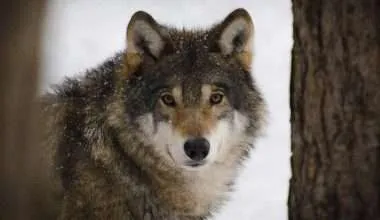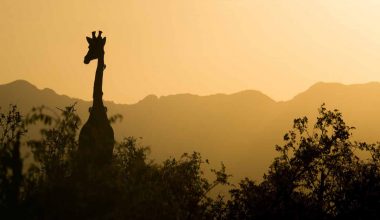Table of Contents Show
What is Trophic Cascade?
A trophic cascade is a side-effect when a trophic level (species) of the ecosystem is reduced or removed. This triggers a cascade (series of events/ effects on other species) that changes the balance of the entire ecosystem.
The ecological species interactions keep entire ecosystems balanced. Hence, suppressing their numbers or changing their behavior due to predation risk, results in an ecological imbalance or a trophic cascade.
For instance, here’s an example of how a top-down cascade can occur.
If predators become stronger in carrying out predation; they will reduce the numbers or alter the behavior of prey species. This spares or saves the next lower trophic level (the next prey in food chain) from predation.
Trophic cascade, as an ecological concept, has stimulated research in various new areas of ecology.
P.S: Trophic cascades are commonly seen when keystone species are removed from the ecosystem. Keystones are species which play a greater role in maintaining ecosystems.
Hence, you can understand why their loss could result in devastating effects.
What is Trophic Level?
A trophic level is a stage that an organism occupies in the food web.
Basically it shows you the number of steps an organism is away from start of the food chain.
A food chain is like a succession tree that shows you which organism will an organism eat and which one will eat it, in turn.
Simply put, a food chain shows you who eats who.
A food web just shows more species since one predator could have many preys and vice versa.
A food web starts at Trophic level 1. Trophic level 1 incudes primary producers like plants which will be eaten by organism at trophic level 2.
Trophic level 2 contains herbivores which eat plants. These herbivores are eaten by carnivorous organism at trophic level 3 or higher.
Trophic level 3 onwards include carnivorous organism (meat-eaters) that eat other animals. Trophic level 3 organism are eaten by animals at the top of food chain (trophic level 4-5)
Trophic level 4 and 5 usually include apex predators at the top of the food chain. These apex predators usually keep the lower trophic levels in check by controlling populations of trophic level 3 and 4. This is why apex predators are sometimes found to be keystone species.
These trophic levels can usually form a one-way path towards the top of the food chain or a food web. Ecosystems with high biodiversity usually have more complex trophic pathways.
However, the rules of trophic levels apply on all food webs. This is because herbivores will always eat plants and carnivores will always be in trophic level 3-5 since they will always eat other animals. Remember, there are very few exceptions like carnivorous plants which eat insects.
Types of Trophic Cascades
There are 3 types of Trophic Cascades
1. Top-Down Cascade
A top-down cascade occurs in ecosystems where the top consumer or apex predator controls population of the primary consumer (herbivore). This, in turn, allows the population of the primary producer (plant species) to thrive.
However, removal of the top predator can result in alteration throughout the food web which can have long lasting effects.
For starters, there would be a rise in primary consumers (leading to overpopulation) and over-exploitation of the primary producers.
Eventually, there won’t be enough plants (producers) to feed the increased amount of consumer population. When there’s limited primary producers, consumers will fight amongst themselves for competition and the ones starving will die off.
In this type of cascade, stability is dependent on competition and predation in higher trophic levels.
Invasive species can trigger this cascade by removing existing apex predator and take its place. However, this interaction won’t necessarily be negative because this is replacement rather than removal.
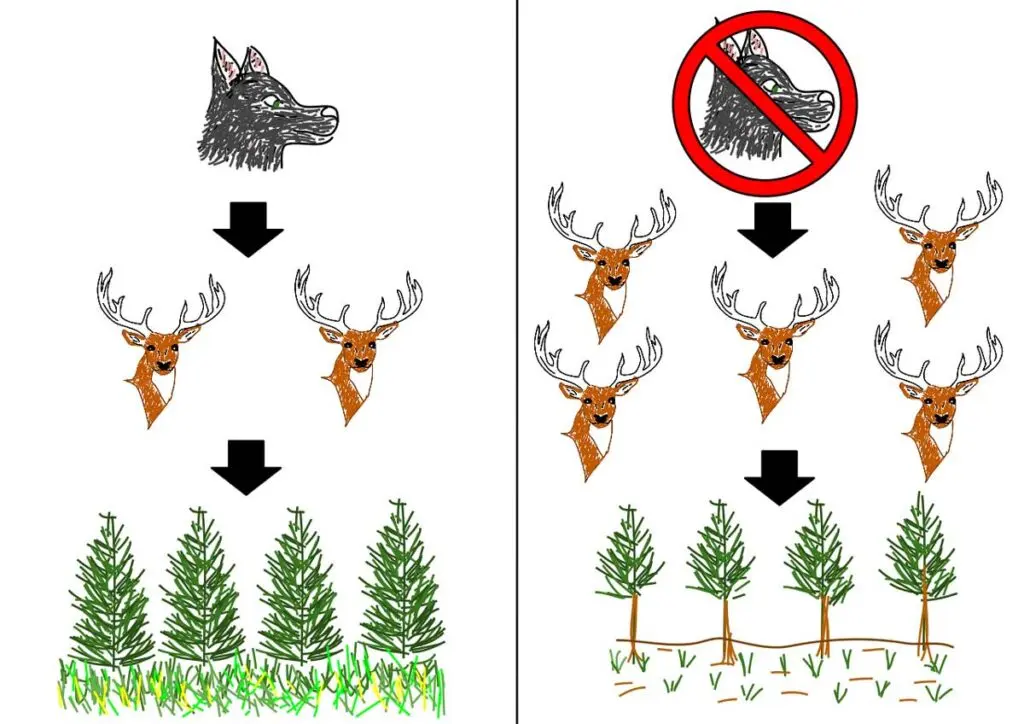
“File:Trophic Cascade.svg” by Ccarroll17 is licensed under CC BY-SA 4.0.
2. Bottom-up Cascade
The number of primary producers in the ecosystem controls the amount of energy carried forward to higher trophic levels.
Plants are primary producers, just like zooplankton or phytoplankton, that carry out photosynthesis to produce energy (for themselves) and oxygen for the environment.
The number of primary producers is altered by the amount of nutrients in the habitat. The food web relies on limitation and availability of resources in ecosystem habitat.
Populations of all trophic levels will suffer with starvation if there isn’t a large amount of nutrients available on an initial basis.
3. Subsidy Cascade
The population of a particular species at specific trophic levels can be supported by external food. Native animals can forage the resources that don’t originate inside the same habitat, like a native predator eats livestock passing by.
This can increase the amount of predators in the ecological community, thus affecting other species in the ecosystem. This will again result in an imbalance and may trigger a trophic cascade.
In other words, this subsidy can allow native animals to increase their populations, triggering powerful secondary cascading effects on the forest food web.
Trophic Cascade Effects on Ecosystems
Ecosystems are well structured and highly balanced through a number of ecological interactions between several species in different trophic levels.
These species serve different functions in a food web.
For example, a predator has direct effects on the prey, in terms of both their population and their behavior.
However, it also appears that the impact of a predator cascades throughout the food chain into other trophic levels.
Scientists refer to this as a “trophic cascade”, initially coined by ecologist Robert T.Paine back in 1980s while studying trophic cascade theory. Originally thought to be a rare occurrence, it is now said to occur throughout freshwater, marine and terrestrial ecosystems.
They occur in all forms including bottom-up, top-down and in a subsidy manner as we discussed.
Trophic cascades not only control species composition, but also production of biomass and interaction of plants and herbivores.
Trophic Cascade Effects on Marine Ecosystems
For instance, over-fishing of cod and other fish species commercially available in the North Atlantic Ocean has caused an increase in smaller fish, like the pelagic fish population, that would otherwise be eaten by cod, snow crab, shrimps and other predatory fish in the marine ecosystem.
These events led to reduction in the population of herbivorous zooplankton, which is consumed by pelagic fishes, and that consequently led to an increase in the population of phytoplankton due to reduced competition. This is what we call a cascading effect.
P.S: The effects will also be suffered by piscivorous fish-eating organisms.
Research is still ongoing to understand the full ecosystem function of these cascades. Several well-established examples may illustrate the concept of trophic cascades, revealing the links existing between different trophic levels.
A number of these links are far from evident and even quite surprising, as you’ll find in the following examples.
Trophic Cascade Examples in various Habitats
1. Wolves in Yellowstone National Park
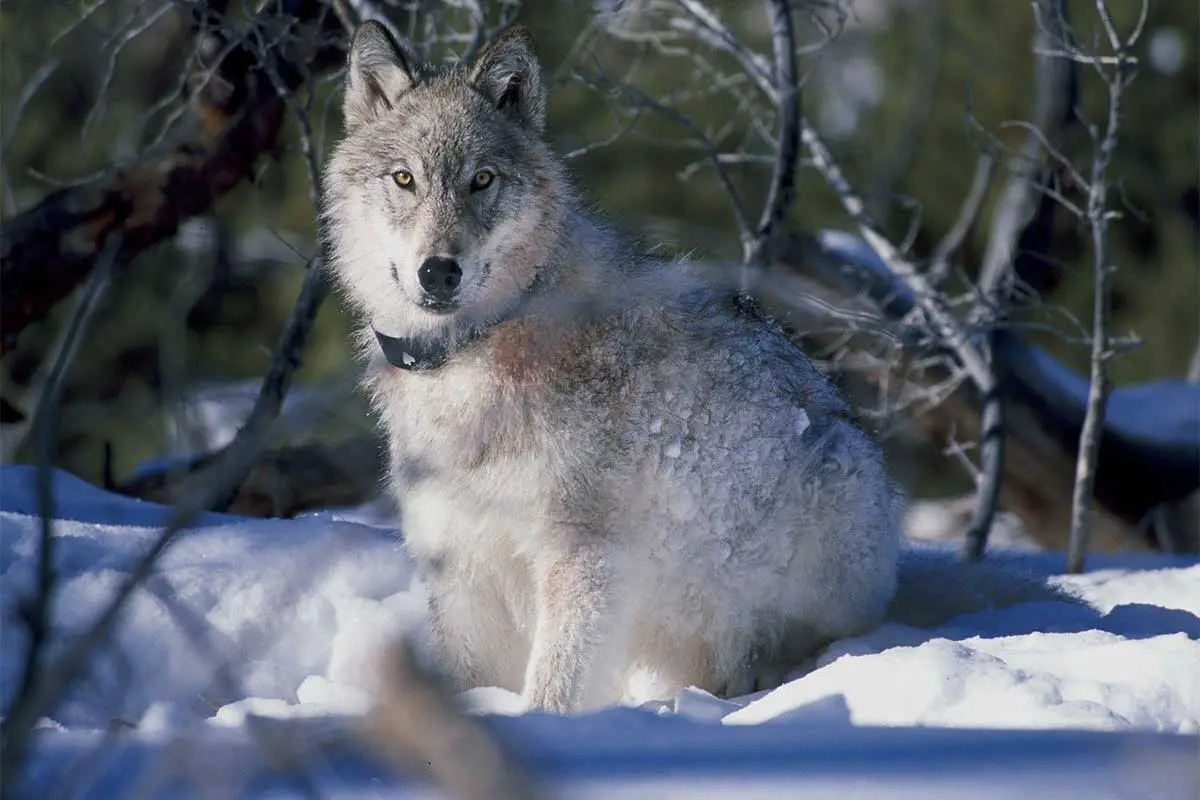
This is one of the well-documented cases of a trophic cascade. This happened in Yellowstone National Park where gray wolf was reintroduced after an absence of 70 years.
A Top-down trophic cascade was initially observed when these species were removed from the Yellowstone national park.
Back to reintroduction, Intensive monitoring by scientists was carried out after the reintroduction and positive effects of wolves have been identified in the ecosystem.
More specifically, elk are no longer scared of wolves. They’ve now learned to move faster and graze for shorter periods in a specific area. This means that they can browse on different species of vegetation and at different intensities.
This has allowed local vegetation to grow under much less pressure from grazing by elk and other grazers.
Stream bank vegetation has started to willow and aspen is growing again, for the first time after decades.
Restoration of vegetation has allowed for the habitat of native birds, fish, and beaver and other species to flourish once again.
Wolves have reduced the number of coyotes and the impact they cause on other species, like pronghorn.
Wolves have gone onto reducing the population of coyotes as much as 50%, which has subsequently lead to an increase in pronghorn rates from 20% to a massive 70%.
As research continues, we’re very hopeful to find other benefits of reintroducing wolves back into the Yellowstone National Park ecosystem.
2. Kelp Beds
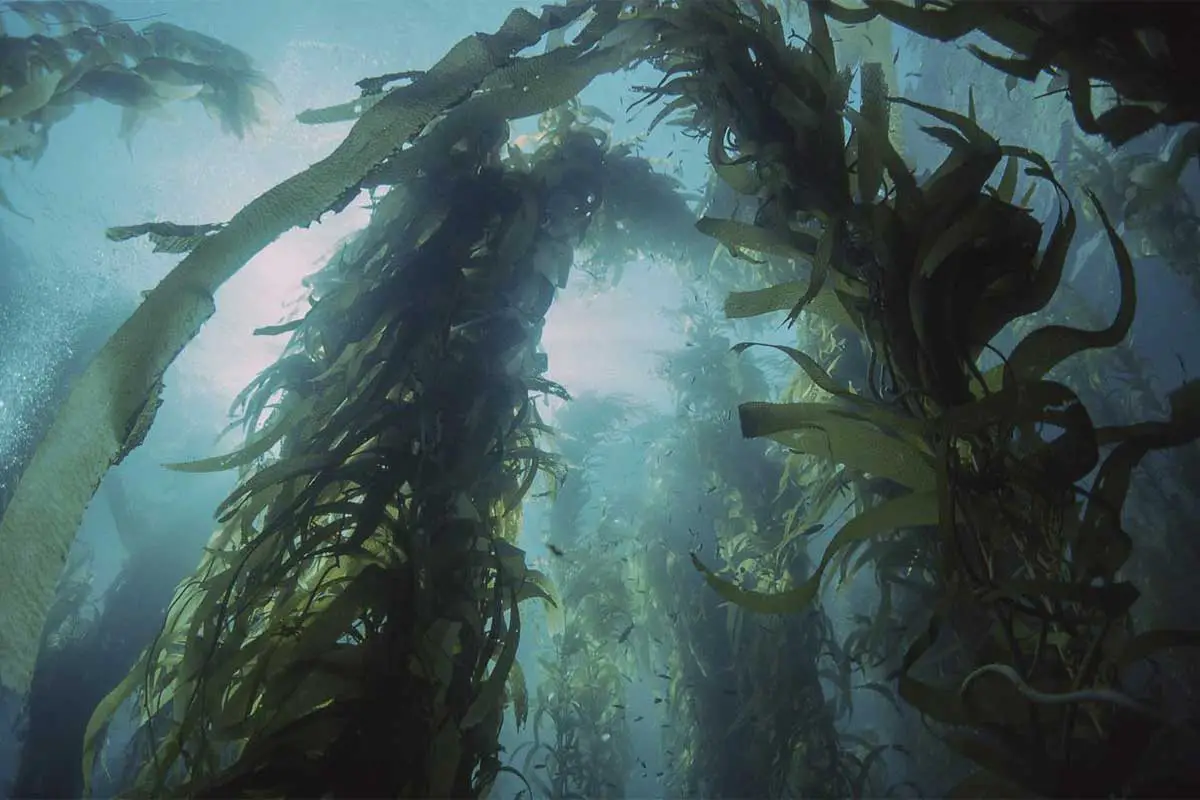
In the Aleutian Island and Southeast Alaska; sea otters, invertebrate herbivores, and macroalgae show spatial and temporal density patterns to suggest that widespread predator species in the ecosystem indirectly allow for plant species to continue growing.
Sea otters were almost hunted to extinction in the early 20th century, for their fur, and now rarely exist along the coast of Southern Alaska.
Where there is a sufficient population of sea otters, there is reduced biomass (numbers) of holdfast grazing urchins. This creates a strong and indirect positive effect on the abundance of macroalgae (like benthic algae), saved from overgrazing.
However, in contrast, a region that has been devoid of sea otters experienced a tremendous rise in sea urchin population and has maintained those populations.
Consequently, the coast has now become barren. As demonstrated by low coverage of kelp forests.
With increase in population of sea otters into new sites in recent decades, there have been predictable changes in the density of sea urchins, kelps, and organisms that have been able to utilize the habitat formed by healthy kelp beds.
These observations show potential for the entire ecosystem to recover with reintroduction of a predator into the ecosystem.
3. Tropical Rainforests – An example of Top down control
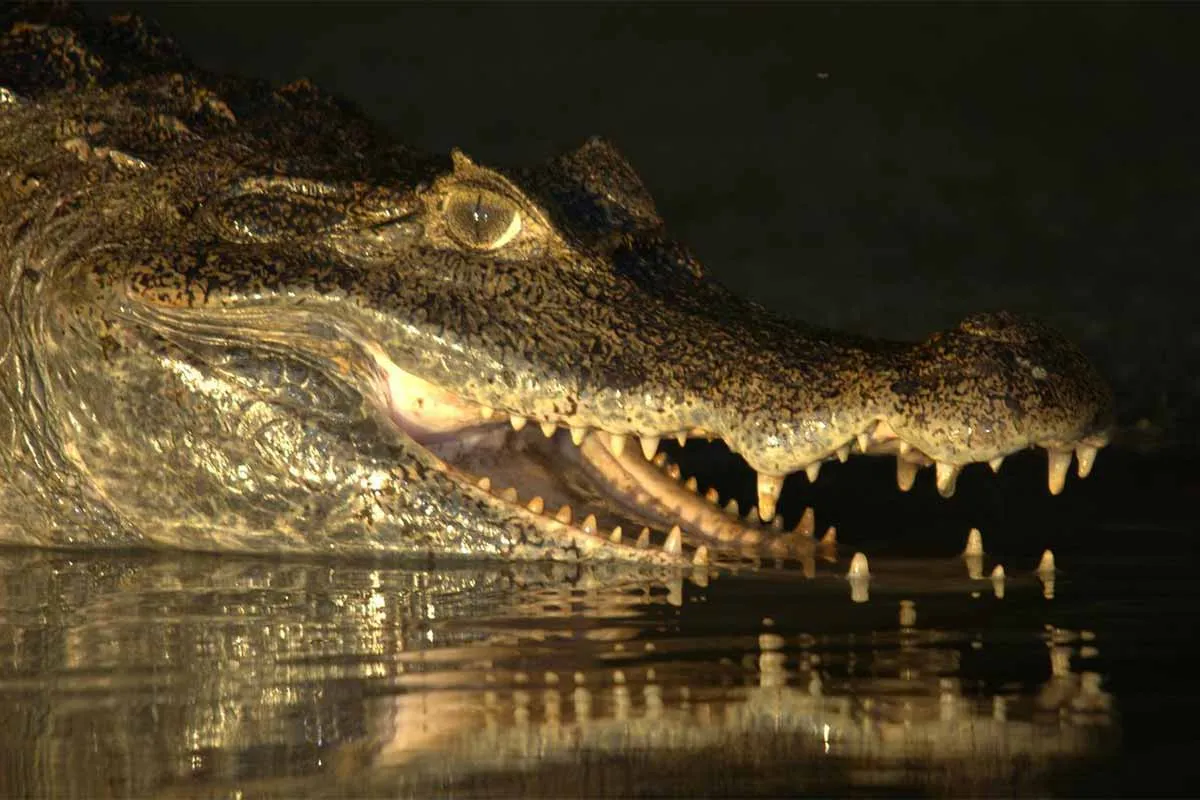
A man-made impoundment created a number of small islands in the middle of Venezuelan rainforests.
Impoundments usually occur when water streams are blocked, which leads to water accumulating into ponds as it has nowhere to go. In other words, water gets impounded.
Researches like John Terborgh took advantage of these islands (natural phenomenon) to compare species diversity of invertebrates (like birds lizards or spiders), seed predators (like rodents) and herbivores (howler monkeys) with and without vertebrate predators to assess the potential for a trophic cascade.
Islands without vertebrate predators (like Orinoco crocodiles) were found to have hyper-abundance (too many) of seed predators and herbivores and significantly reduced numbers of seedlings and saplings that grow into canopy-forming trees.
Increased herbivore numbers would explain the reduced numbers of seedlings. This is because the hungry plant-eating herbivores would eat them up.
Additionally, fewer saplings meant fewer trees, which resulted in reduced overall species diversity.
Such changes in community structure showed that consumer density is not only dependent on availability of food, but rather controlled by strong top-down control by apex predators.
It also proved that, even in tropical rainforests where the primary productivity is high and complex food web systems are in place and trophic cascades were considered a rare occurrence; removal of top-down regulation could cause a severe meltdown in the stability and structure of biological communities.
4. Salt Marshes
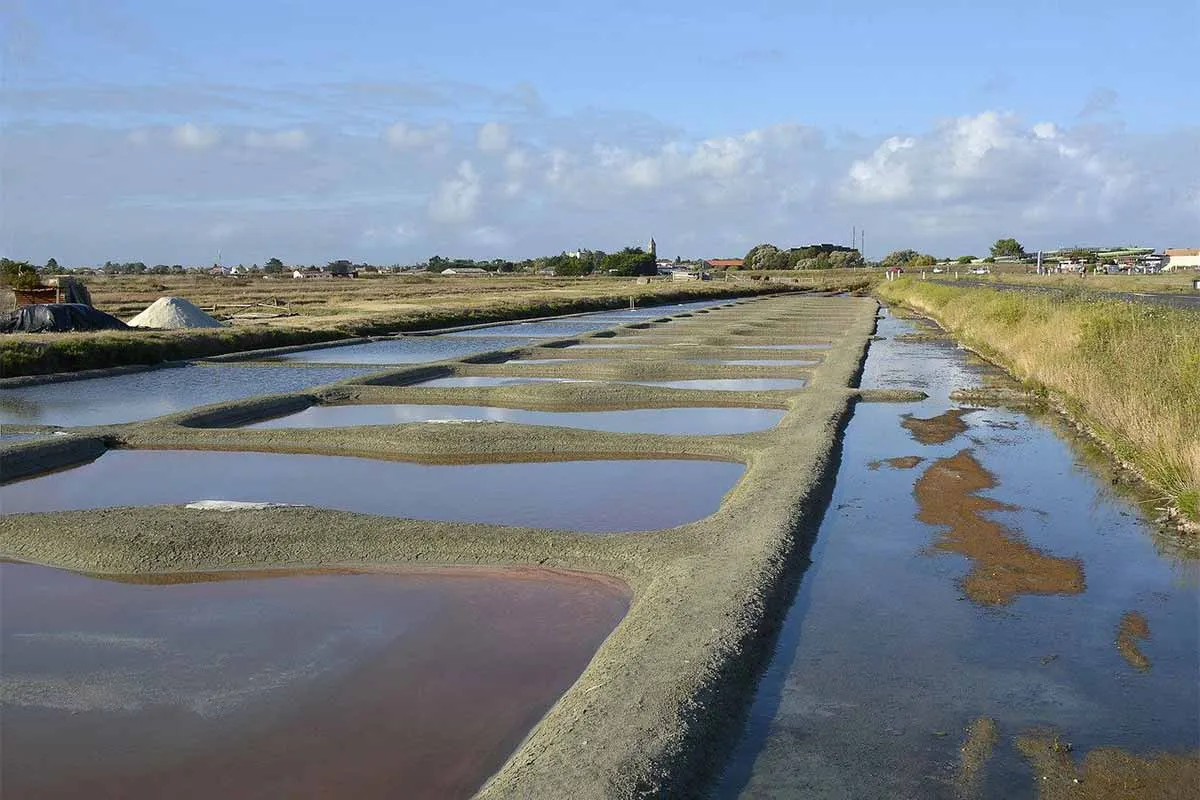
Marshes have long been viewed as an example of bottom-up regulated systems. They were thought to be dominated by the smallest of plants, controlling the physical conditions and nutrition of species in the entire ecosystem.
Scientists researching in Western Atlantic salt marshes found its ecosystem to actually be under strong control of consumer crabs, snails and snow geese.
This allowed scientists to believe that, in the Southern US, plant growth was ultimately being controlled by consumers pushing a powerful trophic cascade.
In these southern marshes, manipulation of consumers was carried out.
The manipulation showed that the most common snail in these salt marshes; long thought to be a detritivore (eats decomposing matter), actually controls the plant growth of marshes by farming fungus on the live plant tissue.
Even at high marsh densities, plant-grazing snail can kill marsh grass and convert these salt marshes into exposed mudflats. Blue crabs, by controlling the distribution and number of these snails, complete this trophic cascade.
When blue crabs were intentionally removed, or naturally due to drought, the number of snails increased and mowed down marshes to create a mosaic of vegetation with exposed mudflat patches.
This suggested that salt marshes are balanced with bottom-up and top-down forces.
Just before I conclude this article, I want to make sure you understood trophic cascades and the example of salt marshes. So here’s a video I found interesting, that will help solidify your understanding too.
Conclusion
The trophic cascades are immensely powerful interactions that can strongly regulate biodiversity and proper ecosystem functioning.
Once considered to be rare, they are now understood to occur across diverse ecosystems and are a common finding in many green plant communities. We now know that trophic cascades can be more powerful under certain conditions.
Research is still very much needed to better understand when and where a trophic cascade will be of more importance.
What do you think about trophic cascades? Comment away.
